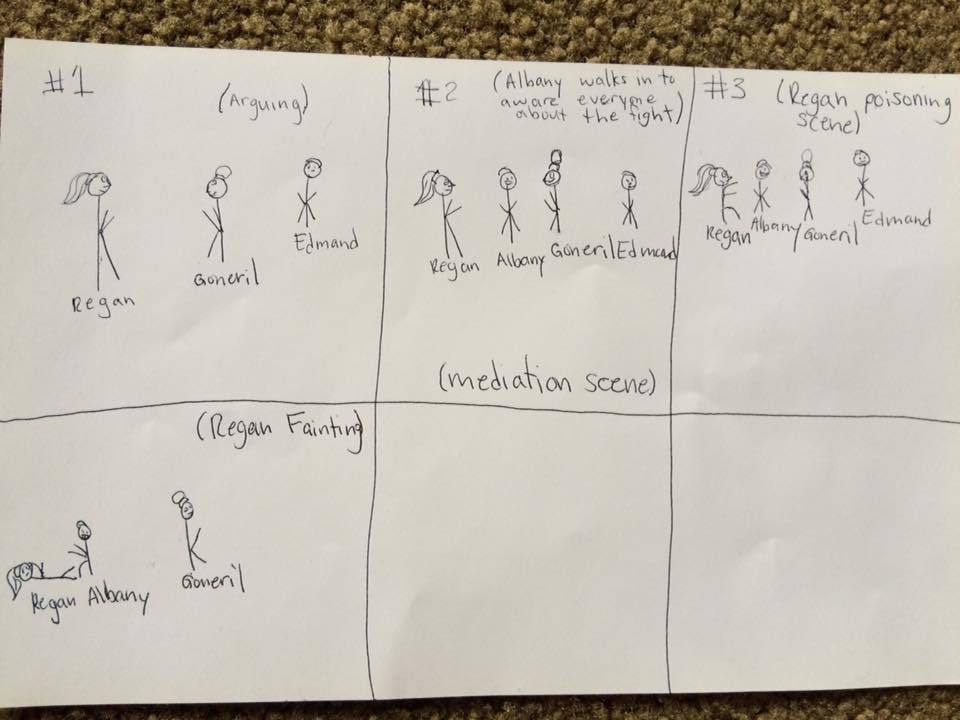(This post is by Alexandra Seits, BMC class of 2016.)
In our prep class the day before our February 19 trip to Stanton, Catharine gave us some verbs to help us tell our scene in our act, including “to engage,” “to enthrall,” “to excite,” and “to captivate.” The next day in our post-Stanton debrief, we discussed the successes and challenges we encountered. Ultimately, one of the challenges that we tossed around was doing the work we need to do (being fully engaging and game for the students) when we are not totally in the mental space to do so. I am putting it into my own words, however, essentially just not feeling up to par to be able to show up fully in ways that are expected of us. For me this brought up the times when I have had to teach yoga classes when I have not felt yogic at all, and how I try to deal. I am hoping to use these tools when I encounter not feeling up to par to act or teach in our 360 so that I can be as fully present, flexible and creative as possible in given instances.
As we have been doing three word check-ins as a group, I have thought about how oftentimes when I am feeling off before teaching a yoga class, I move through what is similar to Mark’s ball of light meditation; however, it is just a quick closing of my eyes and sitting with myself and moving my awareness through different stacked spaces in my body. Having physical spaces to check in with in my body is really vital to my ability to notice and then choose to let go of what is holding me back from being able to teach. One of my goals for myself in this 360 is to start to implement this tool (especially as I was inspired by this challenge we discussed during our debrief) as a prep to show up and step into my full capability. An example of how I often do this is I check in with seven centers from the root of my body to the crown of my head. For example, oftentimes I have something come up in my solar plexus area, which is a place I hold a lot of doubt or insecurity. If I do not move my awareness through my body where I may be carrying anxiety, doubt, or exhaustion, it is nearly impossible for me to even speak, and I cannot ground myself in a way that allows me to show up in ways that are needed of me–whether that’s helping Caroline and Kristin teach our Stanton group, or in a new game, or reading our text.
The link I am including in this post discusses the “system of channels (nadis) and centers of energy (chakras)” which are just different vocabulary or ways of thinking about the ball of light moving through us in the meditation Mark leads us through. Personally, this has been the most help for me to have different places to bring my awareness and have an inner knowing of what I am checking in with as the ball of light moves through us in Mark’s meditation. Just like our three word check-ins or non-verbal check-ins we used with the Stanton students I find it helpful to know what I am checking in with in each of these seven places. Hopefully the words “spirituality” and “energy” in this link do not turn too many people off, and the other vocabulary used in this link can help your awareness expand in your meditations and check-ins.
Also I find that yoga is an interesting thing to consider as we maintain our awareness in our journey of going into Stanton with the privilege we carry into the space of Stanton as college students. Personally my teaching of yoga, as a white female using an appropriated practice and translated vocabulary is something I feel I need to acknowledge; moreover, the tricky dance of sharing the gifts that the practice of yoga holds while maintaining awareness of my privilege feels like an area of examination and exploration similar to that of walking into Stanton as an able-bodied, upper middle class, white college student. The “given circumstances” for my life are important things for me to acknowledge as I challenge myself to use the practice of yoga to show up fully in our work in the 360.
This link above gives the seven major chakras in Sanskrit, so I’ll list them below in English:
First Chakra – Root
(Mooladhara)
Second Chakra – Belly (Sacral)
(Swadishthan)
Third Chakra – Solar Plexus
(Nabhi)
Fourth Chakra – Heart
(Anahat)
Fifth Chakra – Throat
(Vishuddhi)
Sixth Chakra – Third Eye
(Agnya)
Seventh Chakra – Crown
(Sahasrara)


